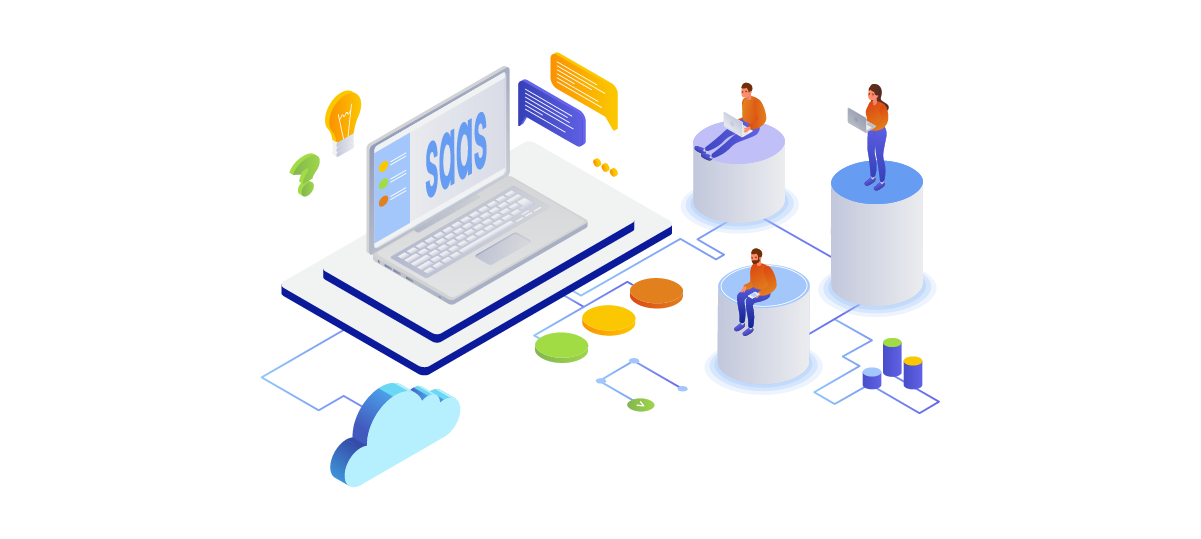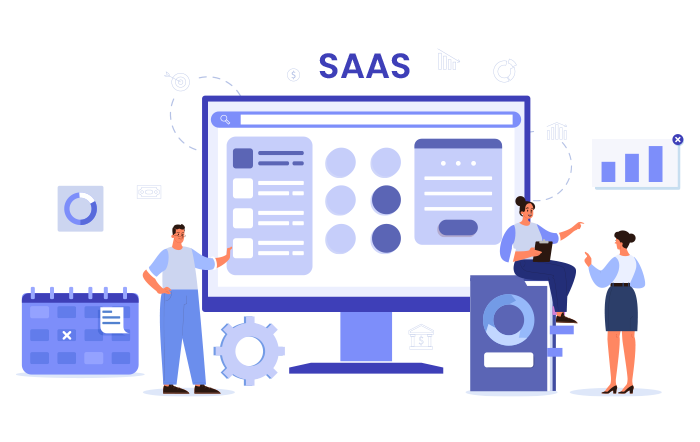Use of SaaS Management Platform for SaaS Operations

SaaS management software has become an essential component looked for by companies of all sizes and domains. Deploying the best SaaS management platform helps your business get a complete solution to track, manage, and maximize the usage of your SaaS products.
SaaS management application assists companies in increasing productivity, reducing expenses, and streamlining processes. However, as businesses use more SaaS apps, managing them can become quite challenging.
In this blog post, we have provided insights on the uses of SaaS management platform in SaaS operations.
Overview of SaaS Management Platforms
A SaaS Management Platform (SMP) with advanced functionalities helps you in effectively managing your SaaS apps. Key features include:
- License Management: Allocation and deallocation of licenses to ensure that your organization doesn’t overspend on unused subscriptions.
- Centralized Dashboard: Real-time visibility, track usage, and performance of all your SaaS applications in a single dashboard.
- Usage Analytics: Real-time data on how each Saas app is used across departments, identifying underutilized apps and helping you with cost optimization.
- Workflow Automation: Helps streamline onboarding and offboarding, which would otherwise consume a lot of your manual time and effort.
- Shadow IT: Helps you in discovering unauthorized SaaS apps used in your organization.
Uses of SaaS Management Platforms in SaaS Operations
SaaS platforms help companies take control over the hidden costs of unmanaged SaaS subscriptions, eliminate SaaS security risks, and make data-driven decisions.
Here is a table providing insights on the major uses of SaaS management platform for SaaS operations.
| Uses | Description |
|---|---|
| Centralized Monitoring | Gives an overview of all your SaaS applications in a single dashboard. |
| License and Subscription Optimization | Automates license subscription, ensuring that you prevent over-licensing in your organization. |
| Vendor and Contract Management | Tracks vendor relationships, contract renewal dates, and performance, enabling businesses to avoid unexpected renewal charges. |
| Enhanced Access Control | Simplifies team collaboration by ensuring proper access to the while maintaining permission management across platforms. |
| Cost Reduction and ROI Enhancement | Eliminate obsolete or unused applications, reducing unnecessary SaaS spending. |
Short-Term and Long-Term Benefits for SaaS Operations Teams
Implementing a SaaS Management Platform provides both short-term and long-term benefits for SaaS operations teams.
Short-Term Benefits for SaaS Operations Teams
- Cost Saving: Unnecessary expenditures can be instantly reduced by removing unused subscriptions and optimizing licenses.
- Quick Integration: SaaS management platforms provide easier integration with existing tools without causing disruption in on-going business processes.
- Eliminate Manual Checking: Through efficient license distribution, operations teams can now work on other productive works thus skipping the laborious work of manual checking.
Long-Term Benefits for SaaS Operations Teams
- Scalability: With the expansion of companies, SaaS management platforms help you accommodate new users, departments, and apps without any issues.
- Enhanced Collaboration: A centralized system enhances cross-departmental collaboration by guaranteeing access to the appropriate tools.
- Data-Driven Innovation: Through the information gathered to enhance your SaaS management platform, businesses can stay on top amongst competitors when they invest in appropriate tools and the right tech stack.
A powerful SaaS management platform, such as CloudFuze Manage, helps you monitor your SaaS apps across departments, offering immediate benefits while providing durable value over time.
How to Select the Right SaaS Management Platform?
Selecting the right SaaS management provider is essential for your organization. Consider these factors during your selection process:
- Discovery Capabilities: How exactly does the platform identify each SaaS application?
- Integration Check: Does the platform merge well with your existing IT infrastructure?
- Analytics and Reporting: How insightful are the platform’s analytics and reporting capabilities?
- Performance and Scalability: Can the platform handle your current and future SaaS growth?
- Pricing Model: Does the cost suit your company’s budget and SaaS consumption?
- User Interface and Usability: Is the platform intuitive and easy for your team to adopt and manage?
Based on these factors and discussing with your teams and stakeholders, you can choose the best SaaS provider to manage all your SaaS apps.
CloudFuze’s Approach to SaaS Operations Management
Our CloudFuze Manage platform provides businesses with a streamlined approach to SaaS operations management.
With advanced features, our SaaS management software helps you manage your growing suite of SaaS applications while helping in optimizing overall costs and improving productivity.
Here’s how CloudFuze helps companies to manage SaaS operations effectively:
1. Centralized Monitoring
Through a centralized dashboard to monitor all your SaaS apps in real time, the insights gathered from our visually appealing and informative dashboards.
Here is our dashboard displaying total SaaS apps, total active users, total money spent and potential savings with categories on each integrated app:

2. Automated License and Subscription Management
Our SaaS management platform helps you manage licenses effectively by providing you with the subscribed licenses for all your applications in a single dashboard. You will get notifications for your license management, right from reminding you about your license renewal to informing you of the expiration date with CloudFuze Manage.
Here is our License Management dashboard providing insights on available licenses, assigned licenses, cost, status of license, license assigned and expiry date details:

3. Data-Driven Decision-Making
Our SaaS management software provides detailed analytics and reporting on each of your SaaS applications. With CloudFuze Manage, businesses can download reports to track user activity, which helps you make data-driven decisions.
4. Automated Workflow Integration
Our SaaS platform automates time-consuming workflows like user onboarding and offboarding. By integrating automated workflows, you can reduce your HR team’s work overhead and improve operational efficiency.
5. Enhanced Supervision
CloudFuze Manage platform is suitable for businesses of all sizes. You can discover the unauthorized applications that create Shadow IT. Whether you manage a handful of SaaS apps or thousands, a powerful SaaS management platform, such as CloudFuze Manage, helps you obtain detailed insights to manage your SaaS apps across departments.
Future-Proof Your SaaS Ecosystem with CloudFuze Manage
With several uses of SaaS management platform in SaaS operations that have been discussed above, your enterprise can discover shadow IT, manage software expenses, and optimize operations across SaaS apps and user lifecycle through CloudFuze Manage.
Contact us for a free consultation on your SaaS management requirements!
Frequently Asked Questions
1. What is a SaaS based platform?
A cloud-based system where customers can use software programs online, usually on a subscription basis, is called a SaaS (Software as a Service) platform. Traditional software licensing is where customers buy and oversee program installations directly. In the Saas platform, the service provider manages the infrastructure, application, and data.
2. What is an example of a SaaS system?
An example is our SaaS management platform, CloudFuze Manage. A well-known example of a SaaS system is Google Workspace which provides cloud-based productivity tools like Gmail, Docs, Sheets, and Calendar, accessible via a web browser.
3. What are the most common SaaS applications?
Some of the most common SaaS applications include HubSpot, Netflix, cloud storage services like Dropbox, Google Workspace, Amazon Web Services (AWS) and Microsoft Azure, Microsoft Teams.



Leave A Comment